A. P. James
Analog Image Denoising with an Adaptive Memristive Crossbar Network
Sep 25, 2022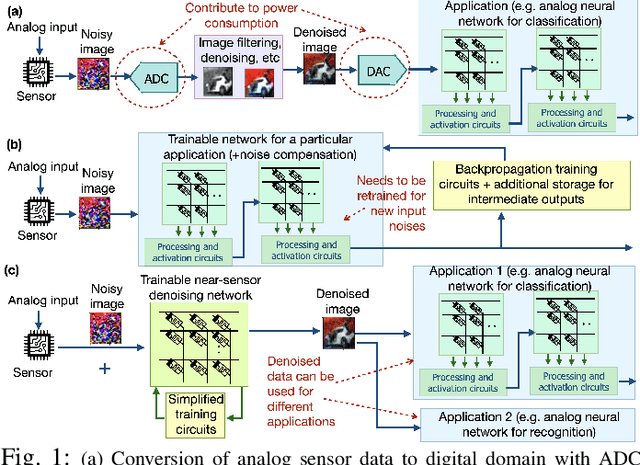



Abstract:Noise in image sensors led to the development of a whole range of denoising filters. A noisy image can become hard to recognize and often require several types of post-processing compensation circuits. This paper proposes an adaptive denoising system implemented using an analog in-memory neural computing network. The proposed method can learn new noises and can be integrated into or alone with CMOS image sensors. Three denoising network configurations are implemented namely, (1) single layer network, (2) convolution network, and (3) fusion network. The single layer network shows the processing time, energy consumption, and on-chip area of 3.2us, 21nJ per image, and 0.3mm^2 respectively, meanwhile, the convolution denoising network correspondingly shows 72ms, 236uJ, and 0.48mm^2. Among all the implemented networks, it is observed that performance metrics SSIM, MSE, and PSNR show a maximum improvement of 3.61, 21.7, and 7.7 times respectively.
TMS-Crossbars with Tactile Sensing
Nov 14, 2021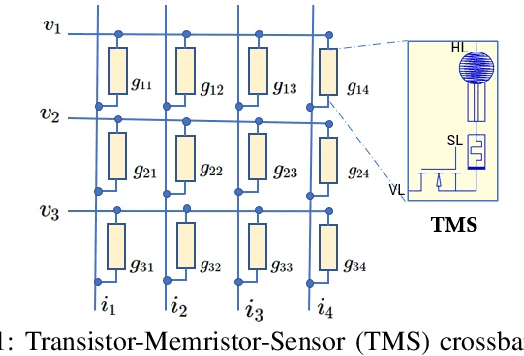
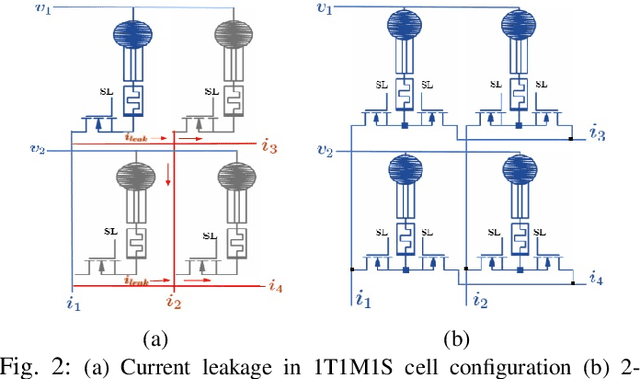
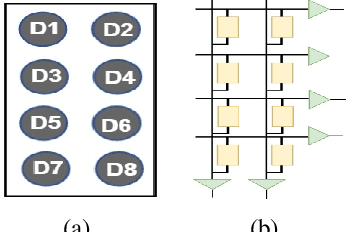
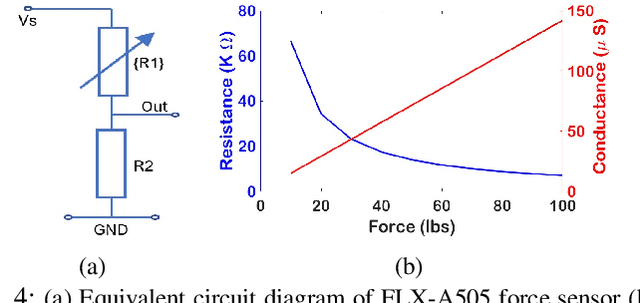
Abstract:The first stage of tactile sensing is data acquisition using tactile sensors and the sensed data is transmitted to the central unit for neuromorphic computing. The memristive crossbars were proposed to use as synapses in neuromorphic computing but device intelligence at the sensor level are not investigated in literature. We propose the concept of Transistor Memristor Sensor (TMS)-crossbar by including sensor to memristor crossbar array configuration in the input layer of the neural network architecture. 2 possible cell configurations of TMS crossbar arrays: 1 Transistor 1 Memristor 1 Sensor (1T1M1S) and 2 Transistor 1 Memristor 1 Sensor (2T1M1S) are presented. We verified the proposed TMS-crossbar in the practical design of analog neural networks based Braille character recognition system. The proposed design is verified with SPICE simulations using circuit equivalent of FLX-A501 force sensor, TiO$_2$ memristors and low power 22nm high-k CMOS transistors. The proposed analog neuromorphic computing system presents a scalable solution and is possible to encode 125 symbols with good accuracy in comparison with other Braille character recognition systems in the literature. The benefits of analog implementation of the TMS crossbar arrays is substantiated with results of accuracy, area and power requirements in comparison with the binary counterparts.
* 5 pages, 7 figures, TCAS2
Analog Neural Computing with Super-resolution Memristor Crossbars
May 10, 2021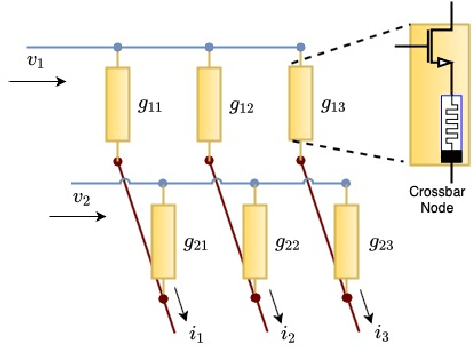
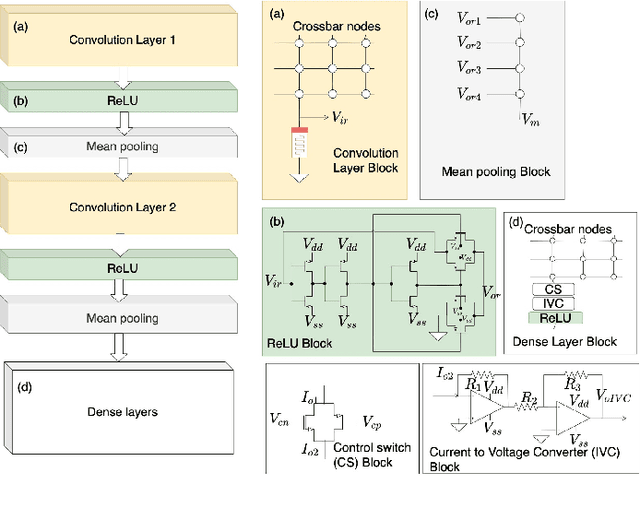
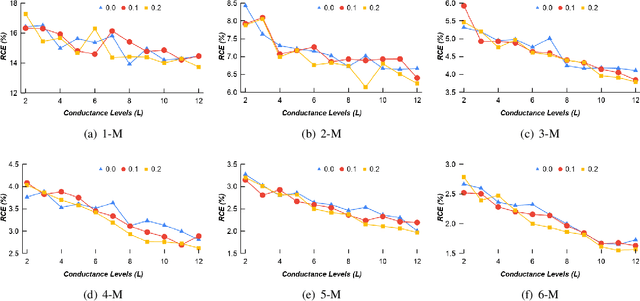
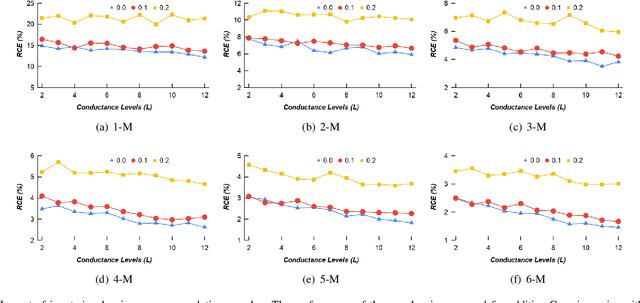
Abstract:Memristor crossbar arrays are used in a wide range of in-memory and neuromorphic computing applications. However, memristor devices suffer from non-idealities that result in the variability of conductive states, making programming them to a desired analog conductance value extremely difficult as the device ages. In theory, memristors can be a nonlinear programmable analog resistor with memory properties that can take infinite resistive states. In practice, such memristors are hard to make, and in a crossbar, it is confined to a limited set of stable conductance values. The number of conductance levels available for a node in the crossbar is defined as the crossbar's resolution. This paper presents a technique to improve the resolution by building a super-resolution memristor crossbar with nodes having multiple memristors to generate r-simplicial sequence of unique conductance values. The wider the range and number of conductance values, the higher the crossbar's resolution. This is particularly useful in building analog neural network (ANN) layers, which are proven to be one of the go-to approaches for forming a neural network layer in implementing neuromorphic computations.
* 13 pages
Automated rating of recorded classroom presentations using speech analysis in kazakh
Jan 01, 2018
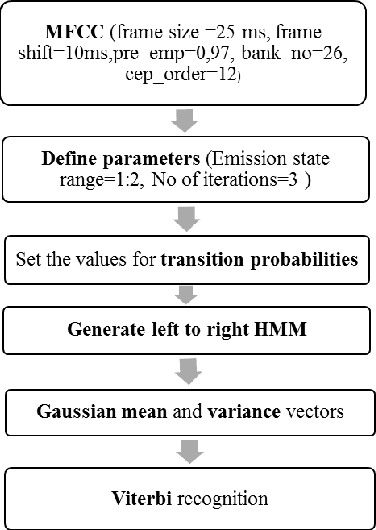
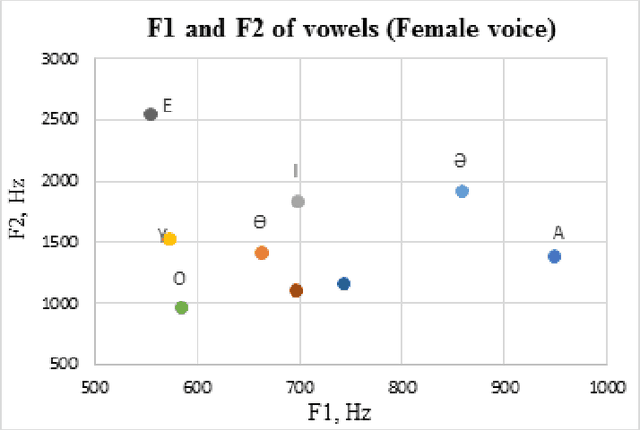
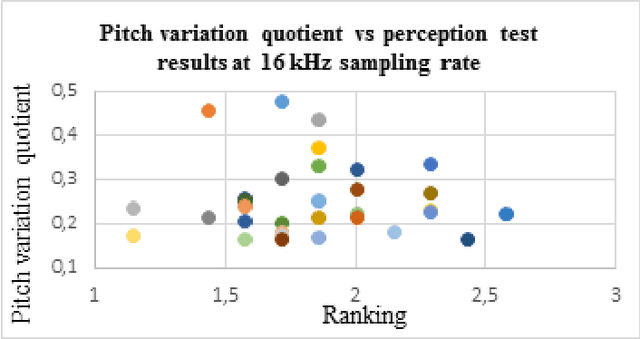
Abstract:Effective presentation skills can help to succeed in business, career and academy. This paper presents the design of speech assessment during the oral presentation and the algorithm for speech evaluation based on criteria of optimal intonation. As the pace of the speech and its optimal intonation varies from language to language, developing an automatic identification of language during the presentation is required. Proposed algorithm was tested with presentations delivered in Kazakh language. For testing purposes the features of Kazakh phonemes were extracted using MFCC and PLP methods and created a Hidden Markov Model (HMM) [5], [5] of Kazakh phonemes. Kazakh vowel formants were defined and the correlation between the deviation rate in fundamental frequency and the liveliness of the speech to evaluate intonation of the presentation was analyzed. It was established that the threshold value between monotone and dynamic speech is 0.16 and the error for intonation evaluation is 19%.
Medical Image Fusion: A survey of the state of the art
Dec 31, 2013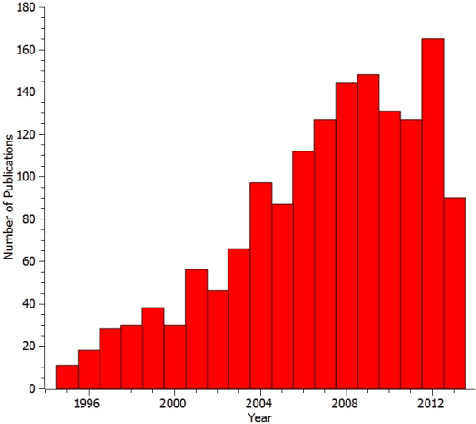
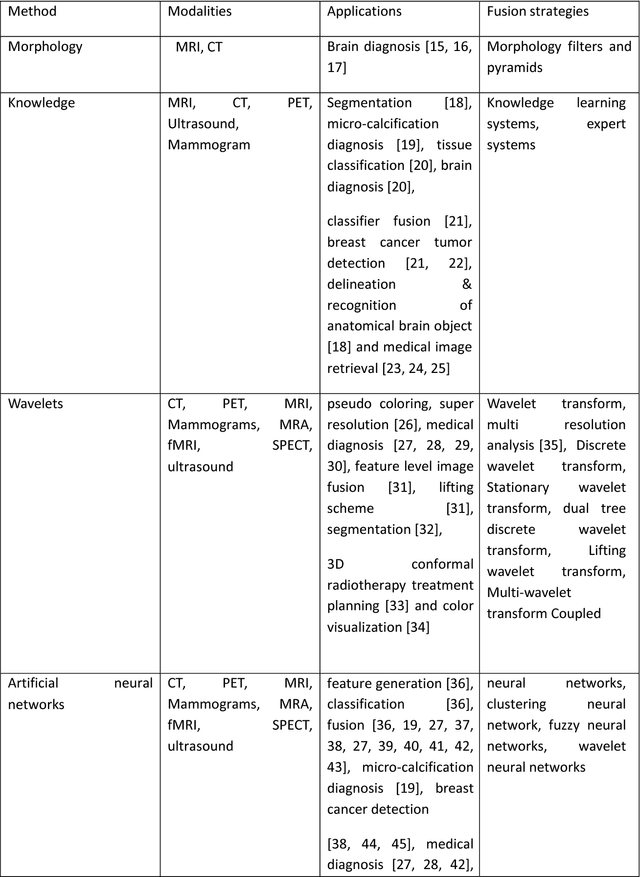
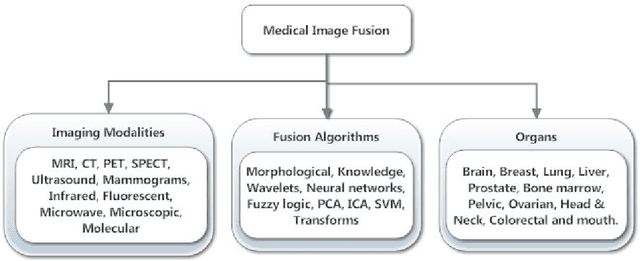
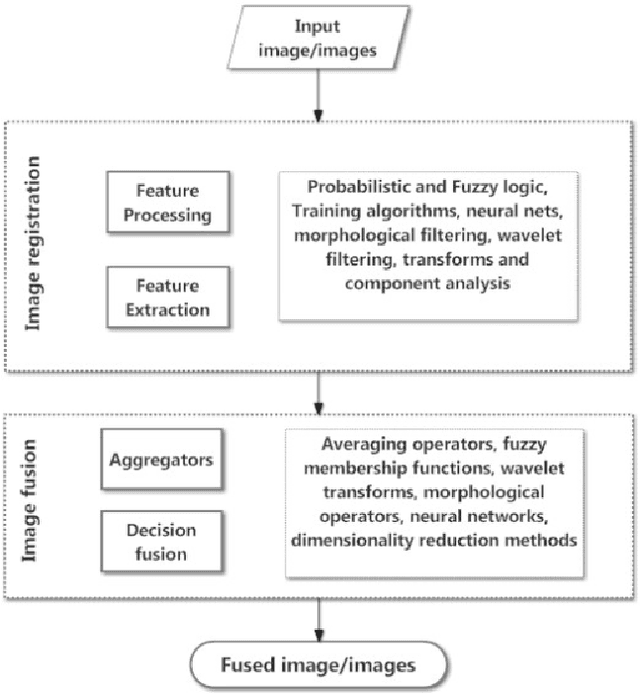
Abstract:Medical image fusion is the process of registering and combining multiple images from single or multiple imaging modalities to improve the imaging quality and reduce randomness and redundancy in order to increase the clinical applicability of medical images for diagnosis and assessment of medical problems. Multi-modal medical image fusion algorithms and devices have shown notable achievements in improving clinical accuracy of decisions based on medical images. This review article provides a factual listing of methods and summarizes the broad scientific challenges faced in the field of medical image fusion. We characterize the medical image fusion research based on (1) the widely used image fusion methods, (2) imaging modalities, and (3) imaging of organs that are under study. This review concludes that even though there exists several open ended technological and scientific challenges, the fusion of medical images has proved to be useful for advancing the clinical reliability of using medical imaging for medical diagnostics and analysis, and is a scientific discipline that has the potential to significantly grow in the coming years.
 Add to Chrome
Add to Chrome Add to Firefox
Add to Firefox Add to Edge
Add to Edge